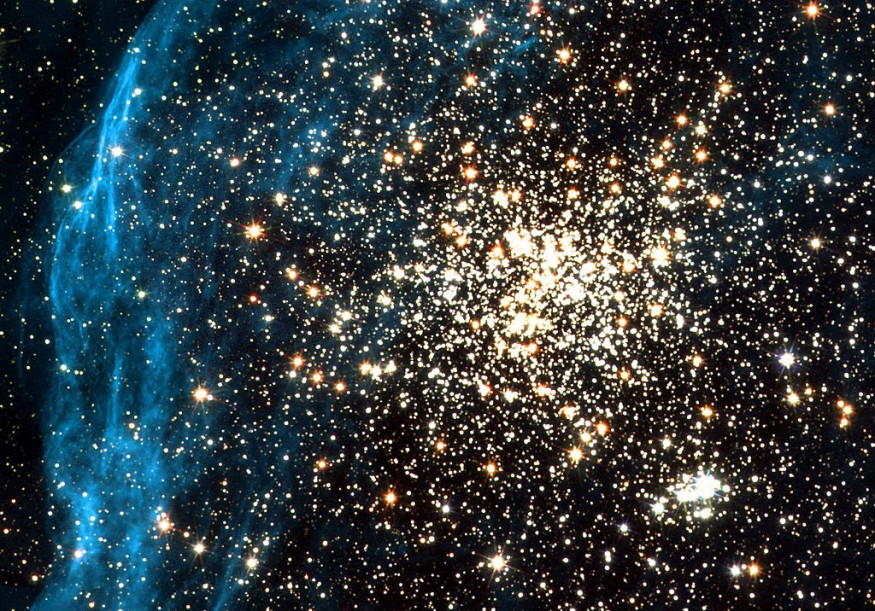For a long time, astronomers assumed that matter was distributed uniformly throughout the visible cosmos. It is the foundation of cosmology. So we reasoned.
According to a virtual briefing by the American Astronomical Society on June 7, researchers uncovered a massive arc of galaxies in a distant region of the cosmos that covers an unconscionably huge distance of more than 3 billion light-years.
This could fundamentally "overturn cosmology as we know it," said Alexia Lopez, a cosmologist at the virtual briefing, in a Science News report. "Our standard model, not to put it too heavily, kind of falls through."

'Giant Arc' of Touching Galaxies Would Span Twenty Times the Moon's Width in the Night Sky
During the Sloan Digital Sky Survey, Lopez and her colleagues at the University of Central Lancashire in Preston, England, discovered the "Giant Arc" by examining light from around 40,000 quasars. Quasars are supposed to be terrifyingly enormous supermassive black holes actively eating at the galaxy's core. And this vast feeding frenzy produces a dazzling light that may be observed from farther away than virtually any other event. However, some of the quasar-borne light is absorbed by atoms in and around galaxies in our relative foreground, resulting in an aggregation of certain characteristics in the light's pattern. And astronomers will be able to tell when it reaches their telescopes.
Magnesium atoms that have lost a single electron while travelling through the halos of galaxies 9.2 billion light-years away are the Giant Arc's hallmark. The astronomers discovered an image of asymmetrical curve of hundreds of galaxies. Interesting Engineering said it stretches around one-fifteenth the radius of the entire observable universe by interpolating the quasar light absorbed by the atoms. This structure is obviously invisible to the naked eye, yet the arc of interpenetrating galaxies would stretch nearly 20 times the full moon's width if we could see it in the night sky. a total of twenty times!
ALSO READ : New Dark Matter Map of Universe Could Prove Albert Einstein's Theory of Relativity Wrong
'Tantalizing' Evidence for a 'Giant Arc,' but Not Convincing Enough For Some
"This is a very fundamental test of the hypothesis that the universe is homogeneous on large scales," said astrophysicist Subir Sarkar at the University of Oxford, who researchers colossal structures of the cosmos, but wasn't involved in the recent work, in a Science News report.
"This is a really big deal" if the Giant Arc of the distant cosmos is proven. Sarkar, on the other hand, has reservations. "Our eye has a tendency to pick up patterns," researchers said. Some people have made outlandish claims, such as seeing Stephen Hawking's initials inscribed in cosmic microwave background oscillations. Stephen Hawking's initials would be as old as the universe's oldest light. This is ludicrous.
Lopez used three statistical tests to determine the chances of galaxies line up in such a massive cosmic march, and all of them suggested it wasn't a fantasy. One of the tests outperformed the physicists' gold standard: when the chances of an observation being a statistical outlier are less than 0.00003 percent. This is remarkable, but it isn't enough to persuade Sarkar. In a Science News piece, he remarked, "Right now, I would say the data is tantalizing but not yet compelling."
This is a major deal, as Sarkar stated. However, we shouldn't dismiss cosmology altogether until more data are produced to corroborate or refute Lopez and colleagues' Giant Arc idea. Even if it turns out to be a fluke, the fact that modern astronomy is facing paradigm-shattering discoveries is a testament to the field's breakneck speed.
RELATED ARTICLE : Milky Way Galaxy Picture: Violent 'Downtown' Shown in NASA's New Stunning Cosmic Image
Check out more news and information on Space on Science Times.












